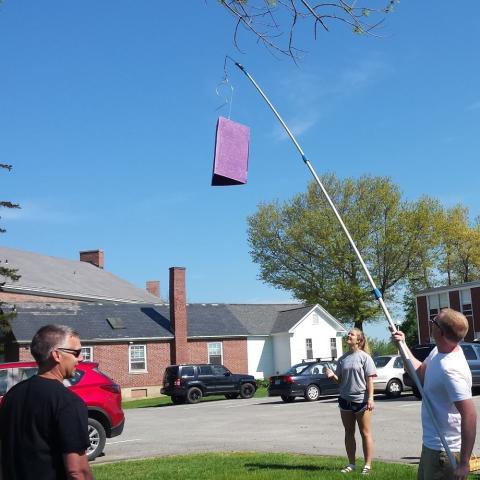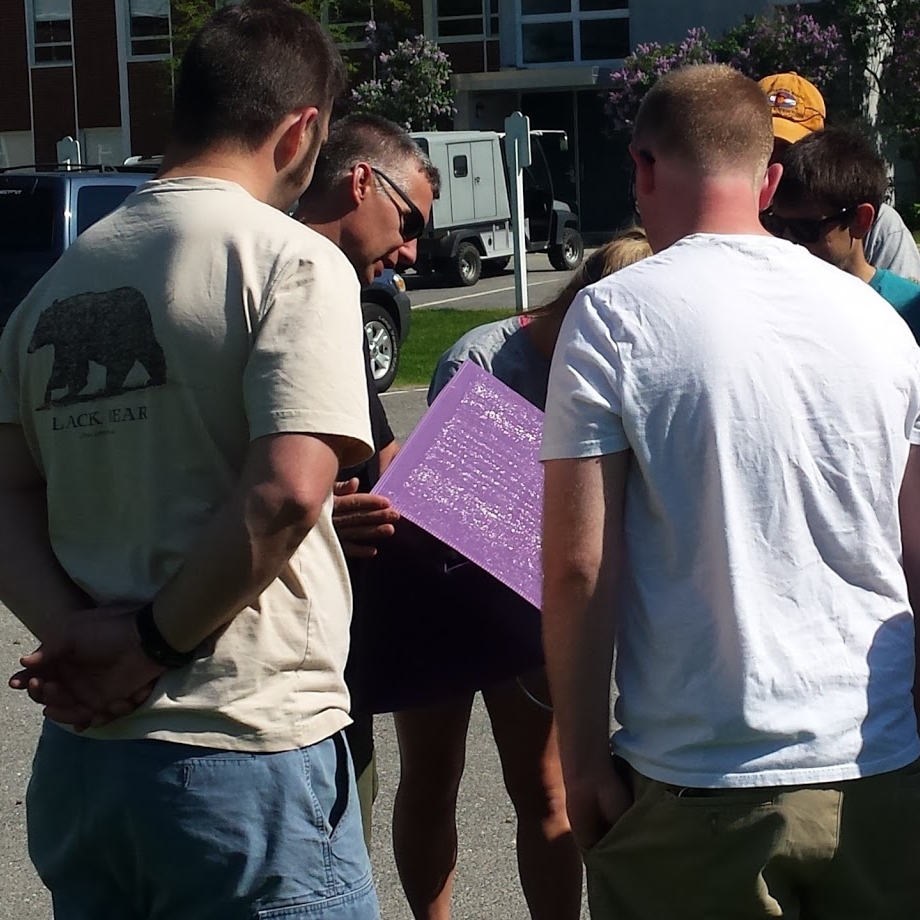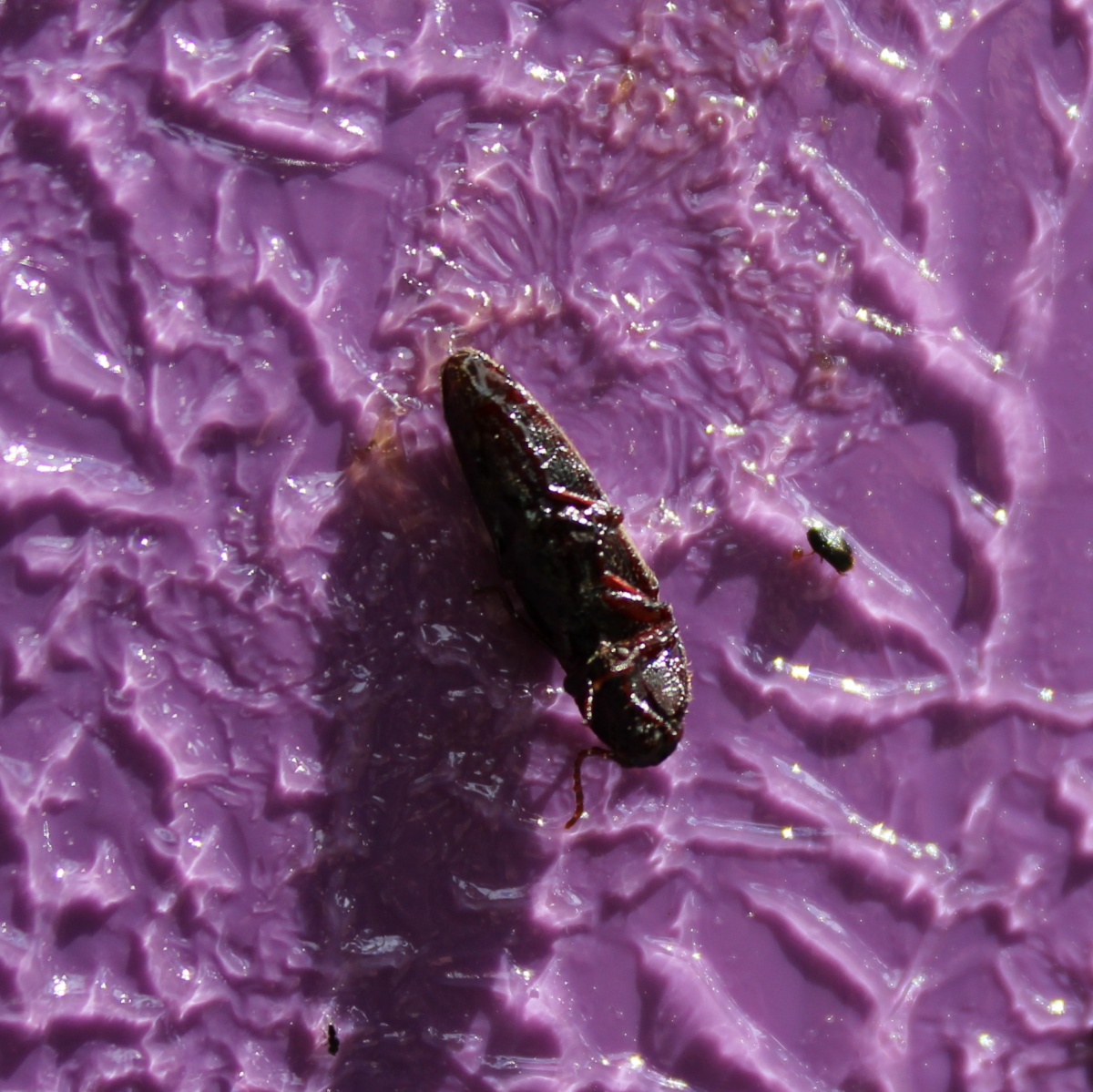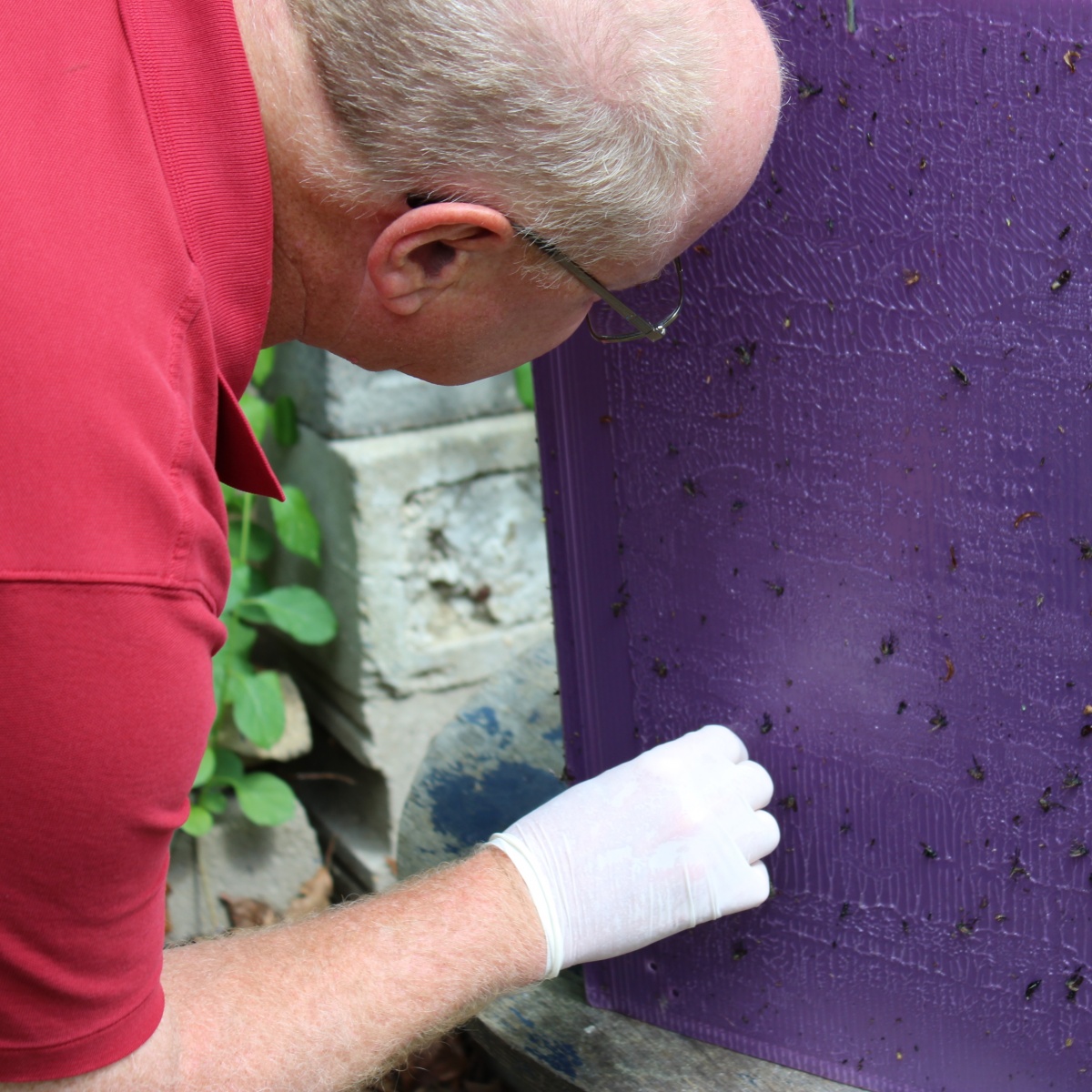Purple Traps a-Plenty

image: Dode Gladders instructs Colby Sawyer students on proper trap placement.
During the summer of 2016, the University of New Hampshire Cooperative Extension helped with New Hampshire’s effort to survey for the emerald ash borer (EAB) with “purple traps.” County foresters were responsible for 55 prism traps as part of an effort coordinated among partner agencies including the N.H. Department of Agriculture, Markets & Food’s Plant Industry Section, the N.H. Division of Forests and Lands, and the U.S. Department of Agriculture’s Animal and Plant Health Inspection Service. Traps were of the purple prism design, with chemical lures inside that can attract nearby EAB, which then become stuck on a glue that coats the outside surfaces.

The exact locations chosen for traps were left to the nine county foresters. In general, sites in non-quarantined counties were positioned at locations that may be at higher risk of new infestations. For example, several traps were hung in Grantham (Sullivan County) near the rest area on Interstate 89. In quarantined counties, the majority of traps were situated away from known infestations in areas where early detection of EAB could make response efforts more successful. For example, if EAB were to be detected on traps at Colby-Sawyer College in New London (Merrimack County), well west of the nearest known infestation, the town of New London would have more time to plan and budget for treatment and removal of ash trees.
Volunteers were also engaged to assist with this survey. Several landowners, Keene High School, Proctor Academy, and various town conservation commissions helped to install and periodically check traps during the June through September survey period. County foresters worked with these volunteers to educate them on how to service traps and what to look for. Several insect specimens were submitted for positive identification and while some native Buprestids (EAB’s close relatives) were found, no EAB were identified on these 55 traps. This project increased the scope of the survey effort, leveraged the efforts of interested volunteers, and helped to educate stakeholders in the importance of early detection of emerald ash borer in New Hampshire.
Though the county foresters didn't find EAB in their purple traps, Bill Davidson of the N.H. Division of Forest and Lands reports some of the traps he deployed captured EAB. "Five of the prism traps captured emerald ash borer representing the first detections of the pest in Goffstown and Pittsfield, bringing the total number of New Hampshire towns with known infestations to 20."



